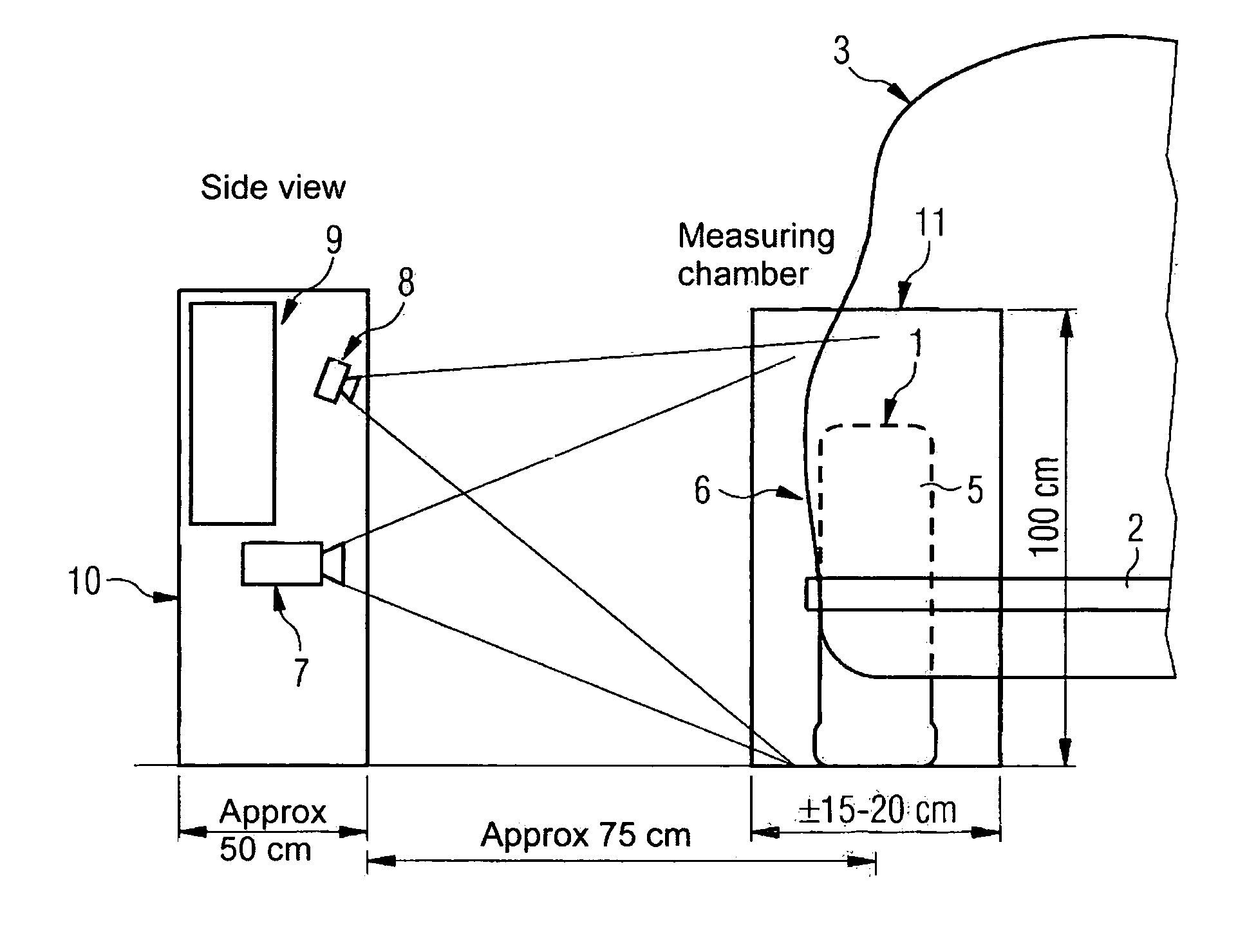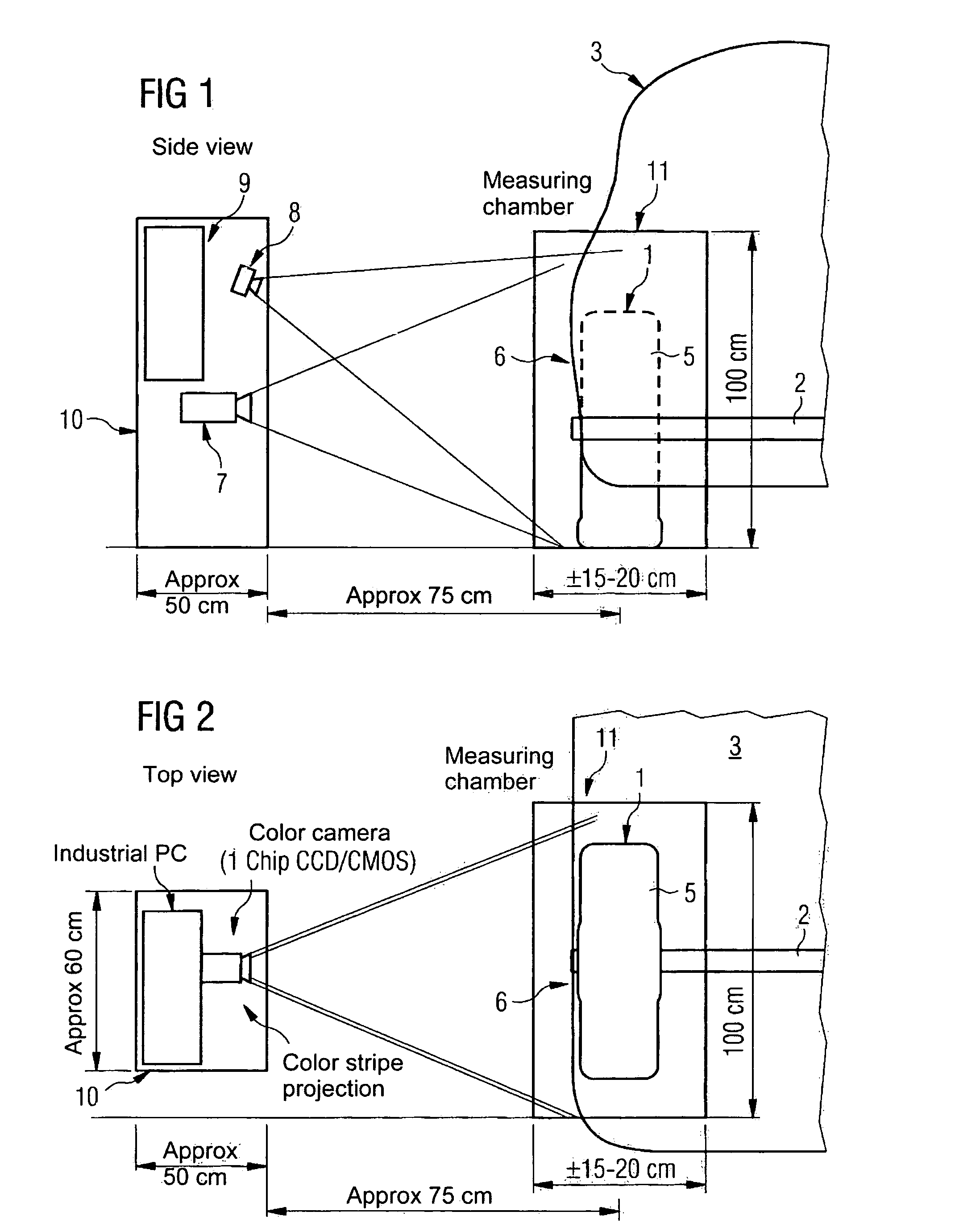Method for determining an axle geometry and sensor for its execution
a technology of a sensor and an axle geometry, applied in the direction of instruments, measurement devices, surveying and navigation, etc., can solve the problems of lines, circles, or ellipses, affecting the evaluation of images, and conventional measurement methods for analyzing the axle geometry of a wheel on a motor vehicle, so as to increase the overall recording reliability
- Summary
- Abstract
- Description
- Claims
- Application Information
AI Technical Summary
Benefits of technology
Problems solved by technology
Method used
Image
Examples
Embodiment Construction
[0044]The present invention will now be described in detail by describing illustrative and non-limiting embodiments thereof with reference to the accompanying drawings. In the drawings, the same reference characters denote the same elements.
[0045]FIG. 7 is a diagrammatic representation of a wheel of a motor vehicle. The left portion of FIG. 7 shows the area of a wheel 1 that can be observed when facing the wheel. As shown in FIG. 8, moreover, a rim 4 is usually fitted to an axle 2. Further, a ring-shaped tire cover 5 is fitted to the rim 4. In particular, the laterally visible face of tire cover 5 is generally used for measuring an axle geometry.
[0046]As shown in FIG. 8, laser probes are used in conventional methods of measuring axle geometry that apply contour lines 13, which are radially aligned on an area of the tire cover 5 of the wheel 1. For example, a laser probe that illuminates the top part of the wheel 1 can apply an illumination that can be used for determining the positi...
PUM
 Login to View More
Login to View More Abstract
Description
Claims
Application Information
 Login to View More
Login to View More - R&D
- Intellectual Property
- Life Sciences
- Materials
- Tech Scout
- Unparalleled Data Quality
- Higher Quality Content
- 60% Fewer Hallucinations
Browse by: Latest US Patents, China's latest patents, Technical Efficacy Thesaurus, Application Domain, Technology Topic, Popular Technical Reports.
© 2025 PatSnap. All rights reserved.Legal|Privacy policy|Modern Slavery Act Transparency Statement|Sitemap|About US| Contact US: help@patsnap.com



